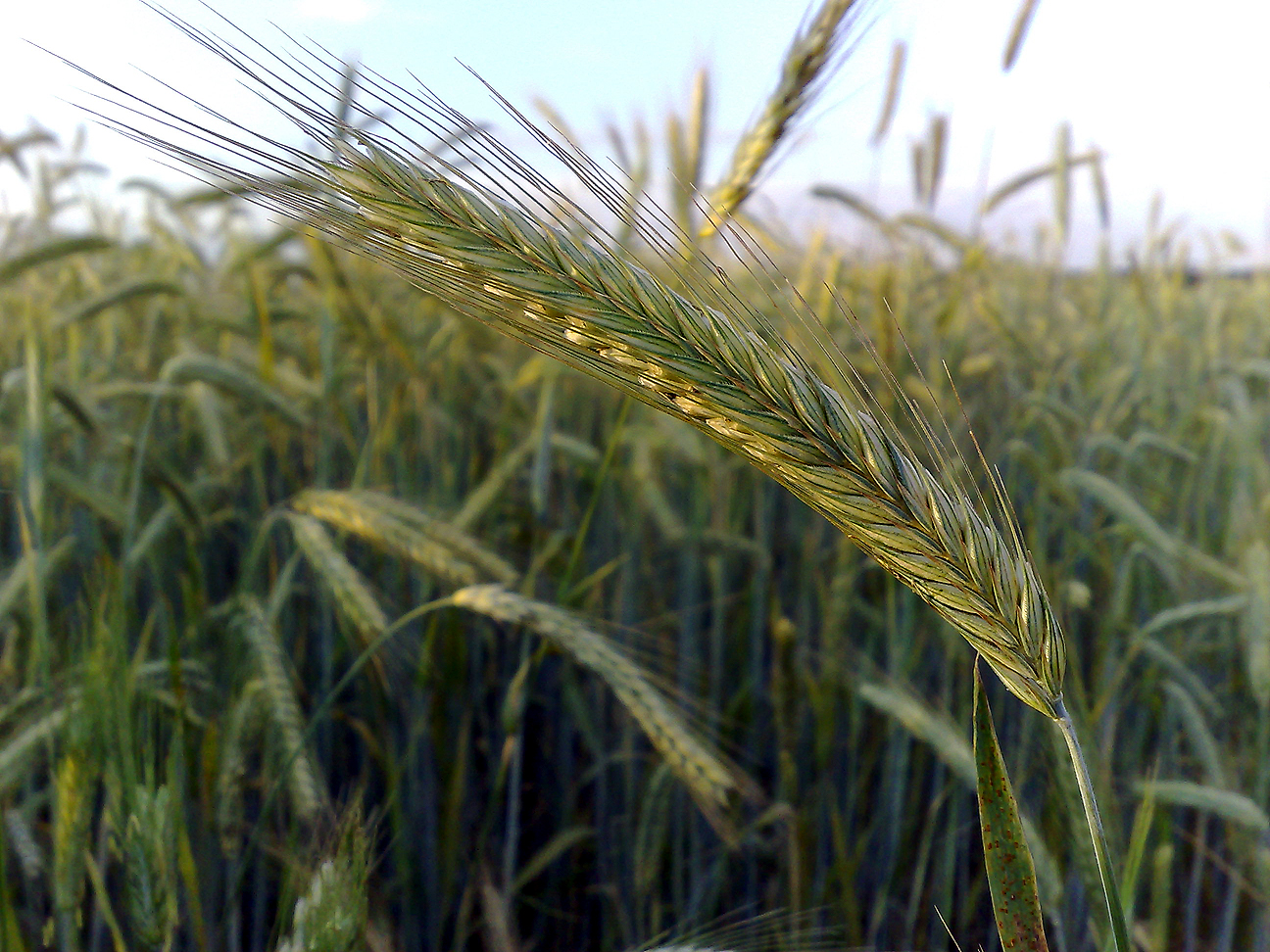 |
| An Ear of Rye |
This isn't my first rye beer; there was last winter's ginger in the fields saison. It was nice and had a great flavor. It was enjoyed by all. This time rather than making another beer that focused as heavily on the ginger I wanted to make a nice saison with rye. This isn't my first saison either, but because my apartment is quite hot during the day I wanted to work with a more temperature tolerant yeast. After looking at the suggested fermentation temperatures of 75-85° for ECY 08 Saison Brasserie I believe that I will be okay.
(please read more after the break.)
In formulating my recipe I looked at the variety of rye available and the general guidance as to including rye. Briess suggests adding chemicals if you use more than 35% rye, so I am going to keep it to 35%.
There are 4 main types of rye available to the average home brewer:
- Rye Malt (5 to 50%): The typical rye malt. Its color(2-4 Lovi) ranges from golden to orange while contributing rye like spiciness.
- Flaked Rye (5-10%): The color is quite pale(2 Lovi). The flavor is similar to regular rye but more potent. The main difference being that this does not have the diastic power to convert itself and requires a converter grain.
- Cara-Rye (5 to 15%): Its color(57-76 Lovi) is brown. It darkens beers while still contributing a typical rye like spiciness.
- Chocolate Rye (1 to 5%): Its color(188-300 Lovi) is dark. The flavor is rye/roast. Contributes significantly to the aroma and color of dark rye beers.
It's a saison so I am going to shoot for orange to red, I find that 10-17 lovibond can look red depending on the glass, after that it's really more of a brown with reddish hues. That goal limits the chocolate and caramel malts to a few ounces total. A good flavorful but not overpowering base malt for a saison is pilsner, I like the nutty contribution. The remainder of the brew will be made up of flaked rye and malted rye. I've selected European hops for this beer, with saisons being a traditional European style I don't want to deviate to much. The final flavor in this beer will be the addition of Brettanomyces Bruxenellus after primary fermentation has ceased. This will give me the rustic farmhouse character that I am looking for from this beer.
Specification:
Boil Size: 1.14 gal
Estimated OG: 1.063 SG
Estimated Color: 13.4 SRM
Estimated IBU: 29.8 IBUs
Boil Time: 60 Minutes
Recipe:
1 lbs 8.0 oz Pilsner (2 Row) Bel (2.0 SRM) 61.6 %
8.0 oz Rye Malt (Briess) (3.7 SRM) 20.5 %
4.0 oz Rye, Flaked (2.0 SRM) 10.3 %
2.0 oz Caramel Rye (Weyermann) (35.0 SRM) 5.1 %
1.0 oz Chocolate Rye (Weyermann) (245.0 SRM) 2.5 %
0.20 oz Willamette [5.50 %] - Boil 60.0 min 19.9 IBUs
0.20 oz Willamette [5.50 %] - Boil 17.0 min 9.9 IBUs
1.0 pkg Saison Brasserie (East Coast Yeast)
Mash Schedule: BIAB, Medium Body
Add 6.27 qt of water at 159.5 F 152.0 F 60 min
Mash Out Heat to 168.0 F over 7 min 168.0 F 10 min
 Brewday:
Brewday:
Everything went smoothly. I came home after work to brew; I had to improvise the hop schedule after realizing that I didn't have the European hops that I wanted to use. I substituted Willamette instead. It is my go to hop after Czech Saaz; I am apparently out of Saaz. The brew was a little bit darker than I thought it would be after brewing. I racked it to the carboy and added the yeast from my starter. After that I was done.
This Morning:
Fermentation was very active when I got up this morning. I could hear the bubbling so I knew the yeast was viable. I pitched at a high rate so vigorous fermentation is to be expected. I am hoping for a high level of attenuation and I will add dregs from a bottle of Orval next week.
 Brewday:
Brewday:Everything went smoothly. I came home after work to brew; I had to improvise the hop schedule after realizing that I didn't have the European hops that I wanted to use. I substituted Willamette instead. It is my go to hop after Czech Saaz; I am apparently out of Saaz. The brew was a little bit darker than I thought it would be after brewing. I racked it to the carboy and added the yeast from my starter. After that I was done.
This Morning:
Fermentation was very active when I got up this morning. I could hear the bubbling so I knew the yeast was viable. I pitched at a high rate so vigorous fermentation is to be expected. I am hoping for a high level of attenuation and I will add dregs from a bottle of Orval next week.

No comments:
Post a Comment